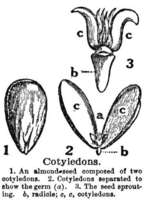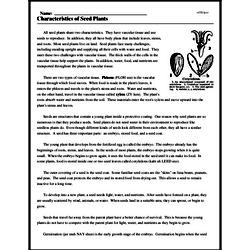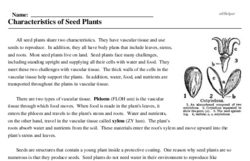Characteristics of Seed Plants
All seed plants share two characteristics. They have vascular tissue and use seeds to reproduce. In addition, they all have body plans that include leaves, stems, and roots. Most seed plants live on land. Seed plants face many challenges, including standing upright and supplying all their cells with water and food. They meet these two challenges with vascular tissue. The thick walls of the cells in the vascular tissue help support the plants. In addition, water, food, and nutrients are transported throughout the plants in vascular tissue.
There are two types of vascular tissue. Phloem (FLOH um) is the vascular tissue through which food moves. When food is made in the plant's leaves, it enters the phloem and travels to the plant's stems and roots. Water and nutrients, on the other hand, travel in the vascular tissue called xylem (ZY lum). The plant's roots absorb water and nutrients from the soil. These materials enter the root's xylem and move upward into the plant's stems and leaves.
Seeds are structures that contain a young plant inside a protective coating. One reason why seed plants are so numerous is that they produce seeds. Seed plants do not need water in their environment to reproduce like seedless plants do. Even though different kinds of seeds look different from each other, they all have a similar structure. A seed has three important parts: an embryo, stored food, and a seed coat.




